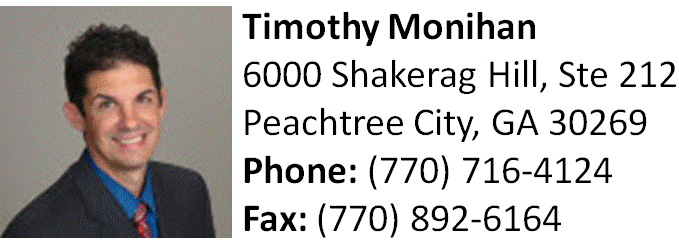Starr’s Mill raises the ceiling with CCRPI scores
Starr’s Mill’s College and Career Ready Performance Index scores raised substantially from 77.3 percent in 2015 to 96.2 percent in 2016. “This growth shows that [Starr’s Mill] is a great place to go to school,” Principal Allen Leonard said.
February 1, 2017
“I think everyone is doing a good job,” Principal Allen Leonard said. “Starr’s Mill High School has always been a great place when it comes to achievement, but the growth measures is where I have the most pride in what we’ve done.”
Last year, Starr’s Mill received a 77.3% on the College and Career Ready Performance Index. This year, the CCRPI scores raised to 96.2%.
“I think it definitely shows that the kids are savvy with what they need to spend their time focusing on,” English department chair Jillian Bowen said.
Milestone test scores are a major factor in regards to calculating CCRPI scores. In 2014, the tests were given out for the first time, so they did not count for or against students’ grades. However, the test scores were taken into account for Starr’s Mill’s 2015 CCRPI score, which was quite low in comparison to previous years. Some speculation that explains the lower test scores, and ultimately the lower CCRPI score, is that students did not prepare as hard as they would have if the tests had counted. In addition, neither the students nor the teachers were familiar with what material would be tested on the new Milestone tests.
“This has been a whole team effort,” Leonard said. “The students are doing better. The teachers are doing better. The administration is doing better too.”
Under the No Child Left Behind Act, schools were measured on Adequate Yearly Progress. However, when Georgia implemented the Elementary and Secondary Education Act Waiver in 2012, the state sought to dispatch the weaknesses of the Adequate Yearly Progress process. Former President Barack Obama’s implementation of the Every Student Succeeds Act in 2015, a re-authorization of the ESEA, provided Georgia with the opportunity to revise the system for school evaluations.
According to the Georgia Department of Education, “the College and Career Ready Performance Index is a comprehensive school improvement, accountability, and communication platform for all educational stakeholders that will promote college and career readiness for all Georgia public school students.” This is Georgia’s way of rating all the schools in the state based upon their performance and how well the students are being educated.
“I think the teachers work really hard, and each group of students is a bit different too, so what might be easy for one group of kids, isn’t always going to be easy for the next group,” Bowen said. “You have to take that into account to an extent as far as achievement is concerned.”
CCRPI scores consist of three basic categories, and within each of these categories are different means of scoring. Achievement is made up of the Milestone scores and college readiness achievement, which is how well the students are achieving in school. Student Growth shows how well the students displayed growth based in the eight areas tested in the Milestones from one year to the next or over the course of multiple years. The third category to determine the CCRPI scores is an Achievement Gap. This is established by comparing the bottom 25 percent of Milestone scores in the core classes: math, science, English language arts, and social studies, to the top 25 percent, in growth, in addition to comparing the scores to the state average. This means if the bottom 25 percent score higher than the state average, the overall category score will be higher for Achievement Gap.
“[Receiving bonus points] definitely helps because it pushes up the achievement category,” Bowen said. “Every little bit helps.”
Beyond regular categories, a school can earn bonus points toward its score. Starr’s Mill received bonus points in the English category based on its number of distinguished learners. According to a DOE press release published after the first administration of the Georgia Milestones tests, “Distinguished Learners demonstrate advanced proficiency in the knowledge and skills necessary at this grade level/course of learning, as specified in Georgia’s content standards. The students are well prepared for the next grade level or course and are well prepared for college and career readiness.” The scores for CCRPI are scaled, which means they can go above 100 percent, and these distinguished learners count 1.5 points toward the scale. Since Starr’s Mill had many distinguished learners, more points were earned toward the overall score, which brought the English score to 102.4 percent.
Starr’s Mill also received bonus points for the percentage of students that took a physics course before they graduated since physics is no longer a required class. Other bonus categories include the percentage of students with disabilities that meet the benchmark for their tests and earn all three of their academic credits.
“Our students are smart and know how to show it,” Bowen said. “The biggest thing I would say is that if the stakes count for you, you’re definitely going to do the best that you can.”
On April 24-28, 2017, the students will take the Milestone tests that will factor into the school’s CCRPI score for the 2017-2018 school year.
Click here to see Starr’s Mill’s full CCRPI report from 2016.


![Starr’s Mill’s College and Career Ready Performance Index scores raised substantially from 77.3 percent in 2015 to 96.2 percent in 2016. “This growth shows that [Starr’s Mill] is a great place to go to school,” Principal Allen Leonard said.](https://www.theprowlernews.org/wp-content/uploads/2017/02/IMG_3569-900x600.jpg)





